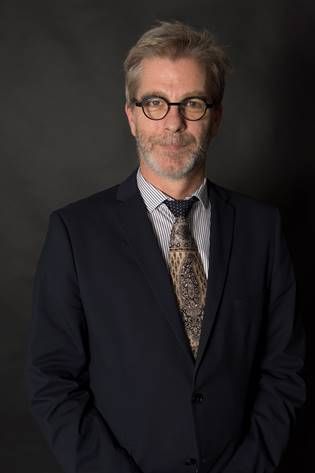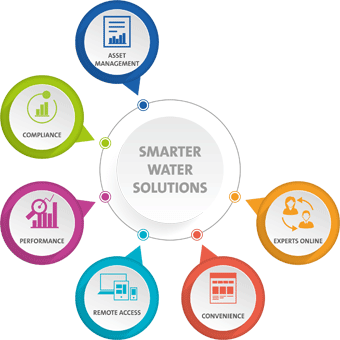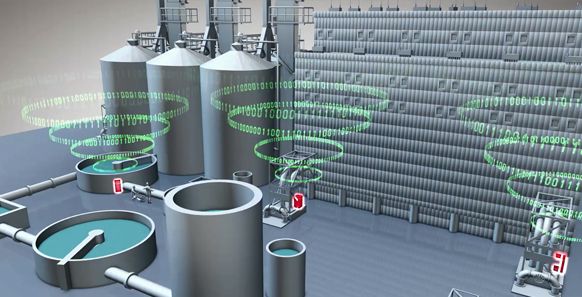In Conversation with Alain Gadbois from Veolia Canada
Published on by Water Network Research, Official research team of The Water Network in Business
As part of the World Water-Tech North America this year, The Water Network had the pleasure of interviewing Alain Gadbois, Vice-President Technology at Veolia Water Technologies Canada.
 Q1. Thank you for taking the time to talk to us. Could you please start by telling us about your career and, though almost everyone is acquainted with Veolia, sharing a few words about it?
Q1. Thank you for taking the time to talk to us. Could you please start by telling us about your career and, though almost everyone is acquainted with Veolia, sharing a few words about it?
I graduated from Ecole Polytechnique of Montreal in 1987 in Civil Engineering. I obtained a Masters Degree from the same institution in 1990. I had worked for AECOM, a Consulting Engineer Firm, before joining Veolia Water Technologies Canada in 1996.
I am Vice President Technologies at VWT Canada, based in Montreal, Canada. I lead the Technology Sector where I am responsible for Process Design and Tendering, R&D / Innovation activities as well as Marketing.
I have taught Water Treatment at 4 different universities in Canada. I have designed and coordinated the implementation of numerous water treatment plants for the industrial and municipal clients. My teams have obtained multiple patents and have received different innovation awards related to water treatment.
Veolia group is the global leader in optimized resource management. With nearly 169 000 employees worldwide, the Group designs and provides water, waste and energy management solutions which contribute to the sustainable development of communities and industries. In 2017, the Veolia group supplied 96 million people with drinking water and 62 million people with wastewater service, produced nearly 55 million megawatt hours of energy and converted 47 million metric tons of waste into new materials and energy. Veolia Environnement recorded consolidated revenue of USD 30.1 billion.
Q2. What makes Veolia stand out in comparison to other water companies?
Veolia is one of the very few companies who combine both technological expertise and operational experience. This invaluable feedback allows us at Veolia Water Technologies to optimize the design of our technologies and processes, as we understand the needs of the operators.
Another thing that makes Veolia Water Technologies stand out is our vast network of business units: we have over 80 business units worldwide, ensuring our municipal and industrial clients receive local service adapted to their market and culture, but backed by a strong, multinational company. We are able to adopt solutions that have worked well in other parts of the world and adapt them as needed to fit local specificities.

Q3. Veolia works on 3 big fronts: water, waste and energy. How do you incorporate the technologies and knowledge in these three fields to improve each one of them?
Veolia benefits from the expertise oin each of these three segments. This gives us the ability to develop integrated offerings and to provide a truly complete range of environmental solutions. We are able to bundle technologies and services in water, waste and energy to optimize the complete cycle. Besides, water treatment solutions require mastering energy as well as the waste produced. Waste projects will require treating water, etc.
Q4. How has the digitalization helped improve the treatment process efficiency, water management optimization and cost-savings?
Veolia proposes the Aquavista™ digitalization platform that allows you to securely share in the cloud data of plants. Managers can access them at Anytime, Anywhere and on Any Device through a single private portal. This access saves time, optimizes performance and secures compliance.

Q5. We would love to know more about examples of how switching to the Cloud has ‘saved the day’ and about a couple of real examples where it has contributed to preventing potential problems.
- In a mining water treatment plant, Aquavista Assist allows our water specialist to follow trends from Montreal. They have made recommendations about sludge extraction that directly prevented nitrite peak and kept water under compliance.
- In a North-West Territory Water Treatment Plant, Aquavista allowed a delicate stop and go process operation to be directed from our Canadian Head-Quarters in Montreal. Full time operation was maintained at the plant.
- At Randle Reef (Hamilton Harbour), Aquavista allows access to the on line follow-up of 14 key operating parameters at the VWT Canada Actiflo Carb Treatment Plant. Any deviation on one of these parameters may trigger the dredging operation, resulting in the loss of thousands of dollars per day.

Q6. What are the biggest challenges in process water and wastewater treatment and how do you approach them?
Several challenges are well known: Climate change, carbon footprint reduction, water index optimization, positive energy production by wastewater plant, water reuse maximization, robustness in front of sudden water inlet quality modifications, etc.
But I will try to surprise you: One of the most important challenges is trust!
Trust can only be established through reliable information. Information about water quality, of course, about chemical consumption, about the sludge generated, the biogas produced, about the hydraulics, even about the weather. Our Aquavista platform, as mentioned in the previous answers, is a key element to establish trust.
Veolia can also be seen as a trusted advisor from industries: We develop trust by listening to our customers and proposing the appropriate solutions. Most of our competitors can only offer one or two processes while our portfolio of solutions brings trust and value.
Q7. What are the key factors in water treatment design in municipal versus industrial water treatment that may be neglected but are unavoidable to be taken into account?
Water treatment design in a municipal application is driven by authorization while in industrial applications, it is mostly result driven. Also, industrial design should take into account that local authorities will consider a follow-up with grab samples (instead of a municipal monthly average). This difference may double the cost of a solution.
Q8. Which areas of innovation in water treatment are, in your opinion, the most promising (regarding treatment quality, are most cost-efficient, environment-friendly, etc.) and why?
Innovation comes from all areas! Having said that, Material Sciences, Biotechnologies, and Digital Sciences (internet of things, big data) will open new opportunities.
Q9. Which of Veolia’s Technologies are you particularly proud of? (Please explain how it works and its application)
Veolia owns more than 350 patent families which give us a lot of opportunities to be proud of them! For Canada:
- Great efforts were made by us to master the cold nitrification and we have developed the Lagoonguard solution for municipalities. This process is able to treat water down to below 1C.
- Traditionally, the mining sector was focusing on physico-chemical processes only. We have introduced a mix of biological and physico-chemical processes that allows removal of toxicity from their raw water.
Q10. Could you tell us about Veolia’s efforts in circular economy?
The days of considering wastewater as an undesirable output that must be discarded are gone. For many areas in Canada, sludge produced by Wastewater Plant won’t be allowed to be disposed in landfills. Veolia has developed the Biothelys Thermal Hydrolysis technology that allows to maximize methane production from sludge. Separated Source Organics (SSO) are now collected by many cities in Canada. Here also, Veolia brings technologies and know-how from all over the world to better serve the Canadian population. For example, Veolia operates the Disco Road SSO plants in Toronto.
Q11. What are internal and external sources of innovation at Veolia?
Innovation is one of the 5 Veolia values. Thousands of Veolia Water Specialists are dedicated in their day-to-day work to elaborate new solutions and processes.
Many different external sources of innovation are also put together:
- Veolia Innovation Accelerator (VIA) is an open Innovation platform that anyone or any organization in the world can access to present their innovation
- At VWT Canada, we have been collaborating with different Canadian Universities (McGill, Ottawa, Calgary, etc.) to develop the next disruptive technologies. We have been collaborating with École Polytechnique (Montreal) since 1992 in the oldest NSERC Chair for drinking and process water.
Q12. What are Veolia’s plans for the future regarding technology development and improvement?
In order to maintain our leading position as Water Treatment Company in the World, Veolia has different plans for innovation. We will continue to cultivate our advantages derived from the diversity of our geographical locations and our immense breath of technical experience to create the environmental services of the future.
Read more interviews
Media
Taxonomy
- Treatment
- Treatment Methods
- Chemical Treatment
- Biological Treatment
- Sewage Treatment
- Treatment Plants
- Wastewater Treatment
- Biological Treatment
- Business Strategy
- water treatment
- Cloud Solutions
- AI